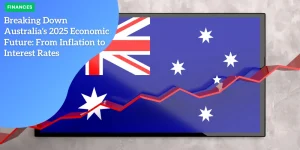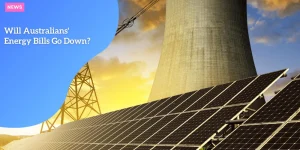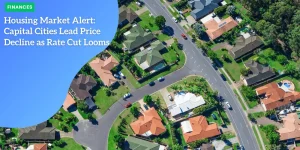Alarming Signs Point to Imminent Surge in Australian Inflation
Anúncios
The Australian economy is currently facing significant challenges, with indicators suggesting that inflation may escalate in the coming months.
A critical factor highlighting this potential upsurge is the disparity between consumer prices and wage growth over recent years.
As households continue to feel the financial strain, policymakers must navigate an increasingly complex economic landscape, balancing short-term relief measures with long-term economic stability.
ANALYSIS
Divergent Perspectives on Inflation
Policymakers, such as the Reserve Bank of Australia (RBA), usually focus on annual inflation rates, using metrics like the Consumer Price Index (CPI) and the trimmed mean.
However, for the average Australian, the cost of living encompasses a more intricate and personal assessment, extending beyond the annual changes captured by the CPI.
Long-Term Cost of Living Considerations
Individuals often evaluate their living expenses over extended periods, reflecting on how costs have evolved over several years.
While the CPI provides a snapshot of annual inflation, it may not fully encapsulate the cumulative financial pressures experienced by households over time.
This discrepancy can result in a significant divide between economic statistics and the financial reality perceived by citizens.
Lived Experience of Inflation
Significant Cumulative Increase in Consumer Prices
Between December 2020 and December 2024, consumer prices escalated by a cumulative 18.9%.
To contextualize this rise, the preceding four-year periods witnessed the following cumulative increases:
| 📅 Period | 📈 Rate (%) |
|---|---|
| 2007-2011 | 10.7% |
| 2011-2015 | 7.9% |
| 2015-2019 | 6.7% |
This data indicates that the recent four-year span has experienced the most substantial rolling four-year inflation rate in over three decades.
Households that once saw moderate increases in expenses are now grappling with unprecedented price hikes, affecting everything from groceries to housing costs.
Erosion of Real Wages
During the same four-year timeframe, wages grew by a cumulative 13.8%, while headline inflation surged by 18.9%.
This disparity signifies the most pronounced deterioration in real wage outcomes for Australian households since the Australian Bureau of Statistics commenced the Wage Price Index in 1997.
Impact on Households
These challenging conditions, coupled with the effects of bracket creep on inflation-adjusted take-home pay, have led many households to feel financially strained.
This sentiment persists even as the annual inflation rate shows signs of moderation.
The gap between increasing prices and stagnant wages has put significant pressure on lower and middle-income earners, making it harder to maintain their standard of living.

Current Inflation Trends
Fluctuating Annual Inflation Rates
In the five years preceding the pandemic, annual headline inflation fluctuated between 1.6% and 2.6%, averaging 2.0%.
Post-pandemic, annual headline inflation has varied more dramatically, ranging from -0.3% in the second quarter of 2020 to 7.8% in the fourth quarter of 2022, with an average of 3.7%.
Recent Moderation with Caveats
As of the latest quarterly data up to the end of last year, year-on-year inflation had decreased to 2.42%.
However, this reduction is influenced by temporary government interventions, such as:
- 📊Electricity subsidies implemented by the Albanese government and select state governments.
- 📊A 10% increase in Commonwealth Rent Assistance (CRA), in addition to the normal indexation of the support payment.
Without these measures, headline inflation would have been approximately 3.60%.
While these interventions have provided short-term relief, their long-term effectiveness remains uncertain as they phase out.
RBA’s Inflation Forecast
Anticipated Resurgence of Inflation
The RBA projects that as temporary subsidies expire, headline inflation is expected to rise above its 2-3% target range, reaching 3.7% in the December quarter of 2025.
A return to the target band is not anticipated until the latter half of 2026.
This suggests that inflationary pressures will persist, requiring additional measures to stabilize the economy and prevent further erosion of household purchasing power.
The central bank’s outlook underscores the delicate balance required in economic policymaking.
While interventionist strategies can offer short-term relief, the long-term structural issues contributing to inflation, such as housing shortages and supply chain disruptions, must also be addressed to prevent recurring inflationary cycles.
Political Implications
Discrepancy Between Policy Focus and Public Perception
Incumbent governments often emphasize their success in reducing annual inflation rates.
However, this approach may not resonate with the public, whose perception of inflation is shaped by personal financial experiences over longer periods.
This disconnect can lead to public frustration and have significant electoral consequences.
Case Study: United States Elections
The recent U.S. presidential election serves as an illustrative example.
Despite the administration’s efforts to highlight a reduction in inflation, a CNN survey revealed that:
- 📊76% of voters who experienced “severe hardship” due to inflation voted for the opposition candidate.
- 📊52% of those who faced “moderate hardship” supported the opposition.
- 📊Only 21% of voters who reported “no hardship” did the same.
This data indicates that voters’ experiences with inflation directly influence electoral outcomes, often overriding broader economic narratives presented by politicians.
Potential Impact on Australian Politics
Similar dynamics could pose challenges for the Albanese government as the next federal election approaches.
Factors such as higher interest rates and substantial rent increases continue to affect Australian households.
While anticipated rate cuts by the RBA may improve the government’s standing, the electorate’s perception of cost-of-living pressures and personal inflation experiences will likely play a crucial role in determining electoral outcomes.
For policymakers, this underscores the importance of addressing not only statistical inflation rates but also the broader economic realities facing Australians.
Failure to do so may lead to widespread discontent, influencing voting behaviors in ways that could significantly impact the political landscape.
Conclusion
The Australian economy is navigating a complex landscape, with indicators pointing toward a potential surge in inflation in the near future.
The divergence between official inflation metrics and the public’s lived experiences underscores the need for policymakers to consider both quantitative data and qualitative sentiments when addressing economic challenges.
As temporary subsidies wane and inflationary pressures persist, both economic strategies and political narratives must adapt to effectively mitigate the impact on households and maintain public confidence.
Without comprehensive policy responses that tackle both short-term price spikes and long-term economic stability, the financial strain on Australian families is likely to continue, shaping the nation’s economic and political future for years to come.







